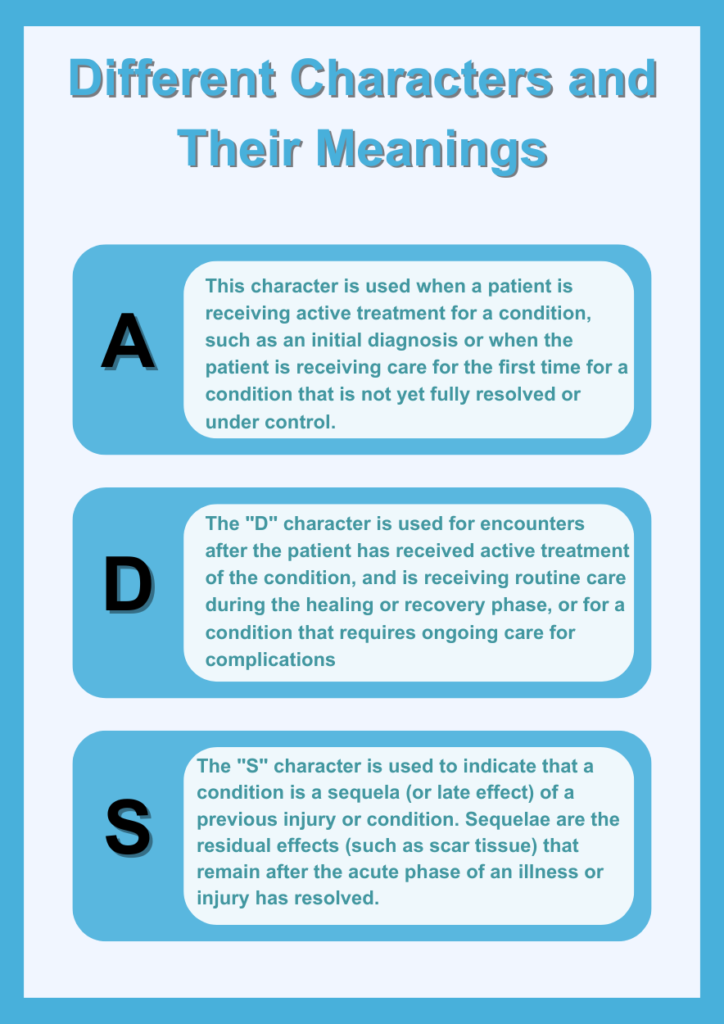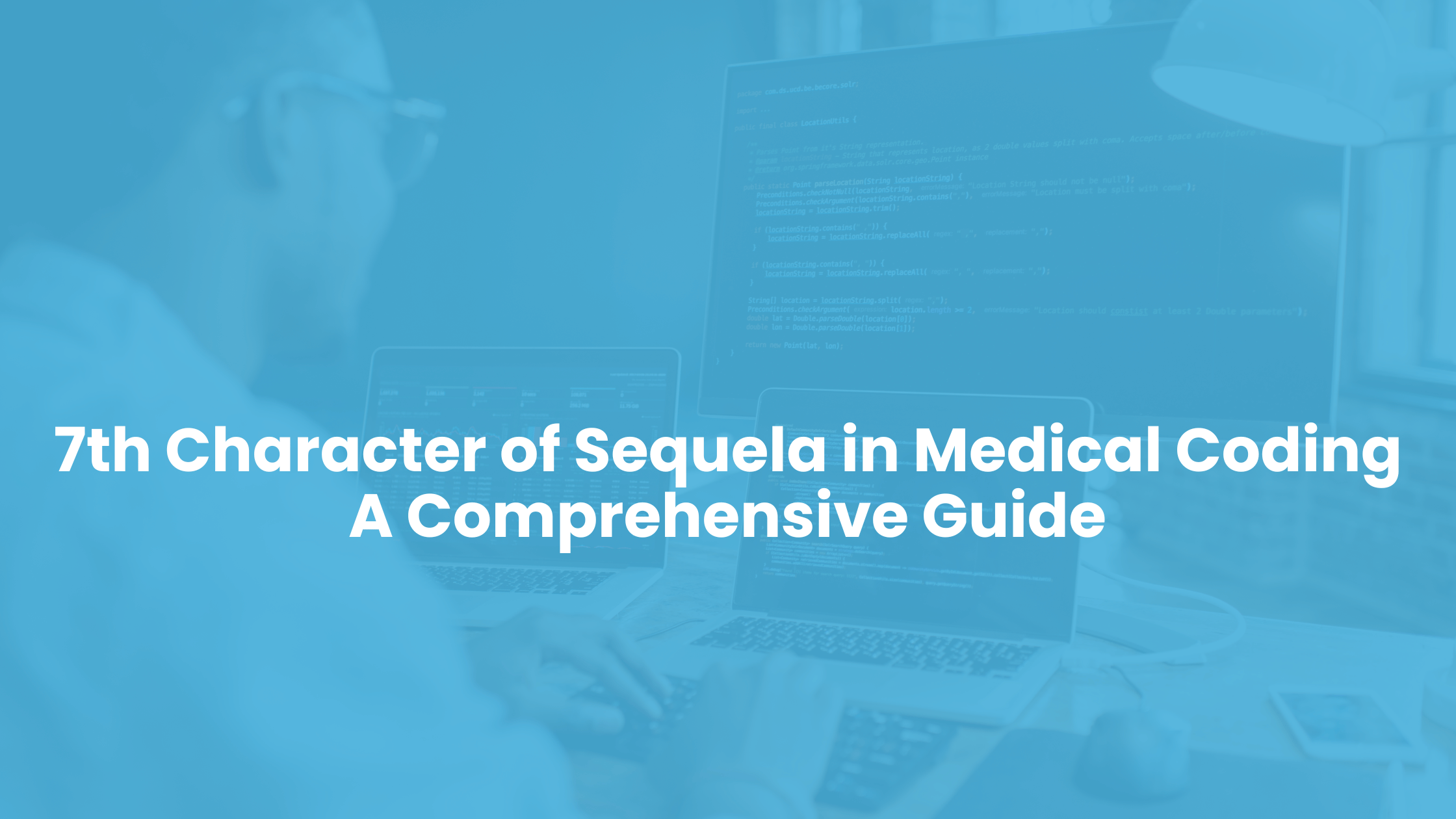7th Character of Sequela in Medical Coding: A Comprehensive Guide
Sequela, a term commonly encountered in medical coding refers to conditions that occur in direct response to an injury or illness that occurred prior to. The ability to accurately code sequela is essential for medical billing and overall management of healthcare. This guide explains the complexities of the 7th Character of Sequela aspect of sequela within ICD-10-CM and explains its significance in application, as well as perfect techniques.
Understanding Sequela
Definition and Explanation:
Sequela is a term used to describe the pathological condition that outcome from an earlier injury, disease or other circumstance. It is the result of residual consequences left behind following that initial phase original illness has gone away.
Examples of Sequela in Medical Conditions:
Common examples include:
- Pain that is chronic following an injury
- Post-traumatic arthritis
- Respiratory issues that last for a long time following a major pneumonia episode.
Benefits of the 7th Character of Sequela in ICD-10-CM
- Enhanced Specificity: Provides detailed details about the condition of the patient and the time of treatment and any sequela, which leads to more precise documentation.
- Enhanced Treatment Planning: Helps healthcare professionals to understand the whole picture of the health of a patient which allows for efficient treatments and management.
- Streamlined Reimbursement and Billing It ensures precise Coding, which is essential in ensuring proper reimbursement for medical care rendered, particularly when there is a sequela in the case.
- Better Healthcare Data Accuracy is a key element in the overall accuracy of health records, which are crucial for policy-making, research, and the advancement of medical understanding.
- Complete Patient Record: Assists in keeping an accurate record of a patient’s medical record that is useful in the future and for any ongoing medical requirements.
- Improved Patient Results The accurate coding of sequelas leads to better management of chronic conditions improving outcomes for patients and the quality of life.
Importance of Accurate Sequela Coding
Impact on Patient Care:
A precise and accurate coding of sequela means that healthcare professionals have an accurate understanding of a patient’s medical history, which allows for better care and treatment planning.
Examples of Sequela in Medical Conditions:
Correct sequela coding is crucial for accurate reimbursement and billing processes. It helps warrant that healthcare professionals receive the appropriate compensation for continuing care of ailments resulting from earlier ailments.
ICD-10-CM Coding Structure
The International Classification of Diseases, 10th Revision and Clinical Modification (ICD-10-CM) is a system of coding used to classify and categorize every diagnosis, symptom, and procedures documented as part of hospital care. It offers a uniform method for documenting and communicating patients’ conditions and conditions, which is crucial for efficient management of healthcare in the areas of billing, and research.
The 7th Character of Sequela in ICD-10-CM provides an additional layer of precision for the diagnostic codes. This character offers extra details regarding the patient’s health condition including the duration of care or the existence of sequela. It ensures that healthcare professionals are aware of the history and medical condition of patients as well as their current condition. The accuracy of this 7th character can be vital to warrant accurate documentation, planning of treatment, and reimbursement procedures.
The 7th Character of Sequela in ICD-10-CM
Definition and Function:
The 7th character of ICD-10-CM provides an extra dimension to diagnosis codes, which ensures the exact recording of the patient’s condition and treatment plan.

Different Characters and Their Meanings:
Characters comprise:
- A: First encounter
- D: Subsequent encounter
- S: Sequela
Common Medical Conditions Requiring Sequela Coding
- Post-stroke sequela includes conditions like hemiplegia or cognitive deficits.
- Sequelae of fractures can involve chronic pain or deformity.
- Long-term effects of burns may include scarring and contractures.
Challenges in Sequela Coding
The 7th Character of Sequela in ICD-10-CM enhances the accuracy and specificity of medical coding by providing detailed information about a patient’s condition, including sequela. This precision aids in comprehensive treatment planning, streamlines billing and reimbursement, and helps maintain thorough medical records. It also improves healthcare data quality, essential for research and policy-making, leading to better management of long-term conditions and enhanced patient outcomes. Overall, the 7th character is a crucial component that significantly benefits both healthcare providers and patients.
Conclusion
The 7th Character of Sequela in ICD-10-CM enhances the accuracy and specificity of medical coding by providing detailed information about a patient’s condition, including sequela. This precision aids in comprehensive treatment planning, streamlines billing and reimbursement, and helps maintain thorough medical records. It also improves healthcare data quality, essential for research and policy-making, leading to better management of long-term conditions and enhanced patient outcomes. Overall, the 7th character is a crucial component that significantly benefits both healthcare providers and patients.

